Zhao Li
Electronic Engineering, Beijing University of Posts and Telecommunications, Beijing, China
Ontology-Enhanced Knowledge Graph Completion using Large Language Models
Jul 28, 2025Abstract:Large Language Models (LLMs) have been extensively adopted in Knowledge Graph Completion (KGC), showcasing significant research advancements. However, as black-box models driven by deep neural architectures, current LLM-based KGC methods rely on implicit knowledge representation with parallel propagation of erroneous knowledge, thereby hindering their ability to produce conclusive and decisive reasoning outcomes. We aim to integrate neural-perceptual structural information with ontological knowledge, leveraging the powerful capabilities of LLMs to achieve a deeper understanding of the intrinsic logic of the knowledge. We propose an ontology enhanced KGC method using LLMs -- OL-KGC. It first leverages neural perceptual mechanisms to effectively embed structural information into the textual space, and then uses an automated extraction algorithm to retrieve ontological knowledge from the knowledge graphs (KGs) that needs to be completed, which is further transformed into a textual format comprehensible to LLMs for providing logic guidance. We conducted extensive experiments on three widely-used benchmarks -- FB15K-237, UMLS and WN18RR. The experimental results demonstrate that OL-KGC significantly outperforms existing mainstream KGC methods across multiple evaluation metrics, achieving state-of-the-art performance.
T2S: High-resolution Time Series Generation with Text-to-Series Diffusion Models
May 05, 2025Abstract:Text-to-Time Series generation holds significant potential to address challenges such as data sparsity, imbalance, and limited availability of multimodal time series datasets across domains. While diffusion models have achieved remarkable success in Text-to-X (e.g., vision and audio data) generation, their use in time series generation remains in its nascent stages. Existing approaches face two critical limitations: (1) the lack of systematic exploration of general-proposed time series captions, which are often domain-specific and struggle with generalization; and (2) the inability to generate time series of arbitrary lengths, limiting their applicability to real-world scenarios. In this work, we first categorize time series captions into three levels: point-level, fragment-level, and instance-level. Additionally, we introduce a new fragment-level dataset containing over 600,000 high-resolution time series-text pairs. Second, we propose Text-to-Series (T2S), a diffusion-based framework that bridges the gap between natural language and time series in a domain-agnostic manner. T2S employs a length-adaptive variational autoencoder to encode time series of varying lengths into consistent latent embeddings. On top of that, T2S effectively aligns textual representations with latent embeddings by utilizing Flow Matching and employing Diffusion Transformer as the denoiser. We train T2S in an interleaved paradigm across multiple lengths, allowing it to generate sequences of any desired length. Extensive evaluations demonstrate that T2S achieves state-of-the-art performance across 13 datasets spanning 12 domains.
Research on reinforcement learning based warehouse robot navigation algorithm in complex warehouse layout
Nov 09, 2024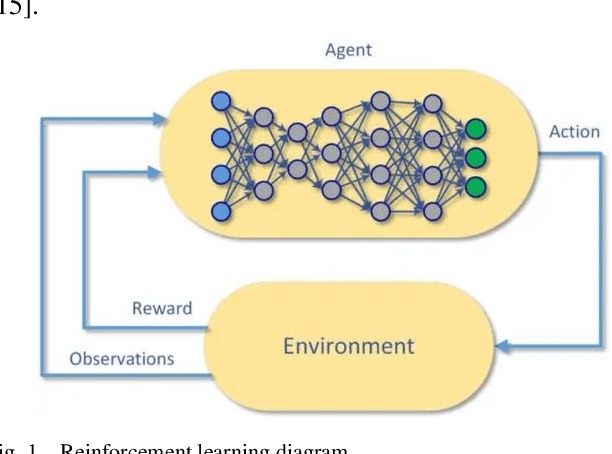
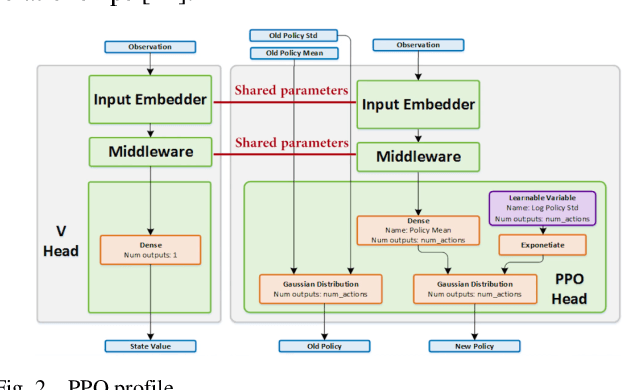
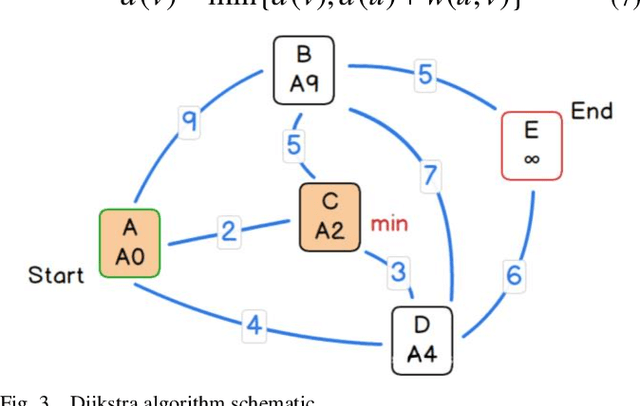
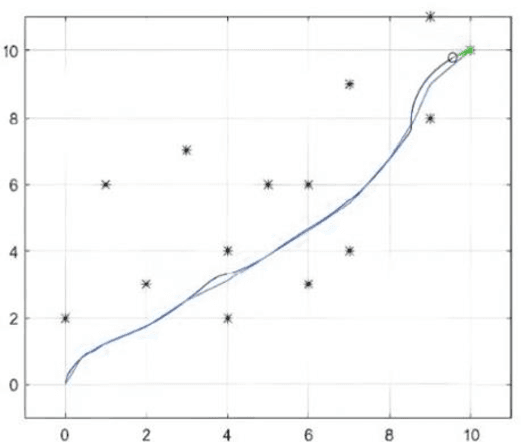
Abstract:In this paper, how to efficiently find the optimal path in complex warehouse layout and make real-time decision is a key problem. This paper proposes a new method of Proximal Policy Optimization (PPO) and Dijkstra's algorithm, Proximal policy-Dijkstra (PP-D). PP-D method realizes efficient strategy learning and real-time decision making through PPO, and uses Dijkstra algorithm to plan the global optimal path, thus ensuring high navigation accuracy and significantly improving the efficiency of path planning. Specifically, PPO enables robots to quickly adapt and optimize action strategies in dynamic environments through its stable policy updating mechanism. Dijkstra's algorithm ensures global optimal path planning in static environment. Finally, through the comparison experiment and analysis of the proposed framework with the traditional algorithm, the results show that the PP-D method has significant advantages in improving the accuracy of navigation prediction and enhancing the robustness of the system. Especially in complex warehouse layout, PP-D method can find the optimal path more accurately and reduce collision and stagnation. This proves the reliability and effectiveness of the robot in the study of complex warehouse layout navigation algorithm.
Weighted Diversified Sampling for Efficient Data-Driven Single-Cell Gene-Gene Interaction Discovery
Oct 21, 2024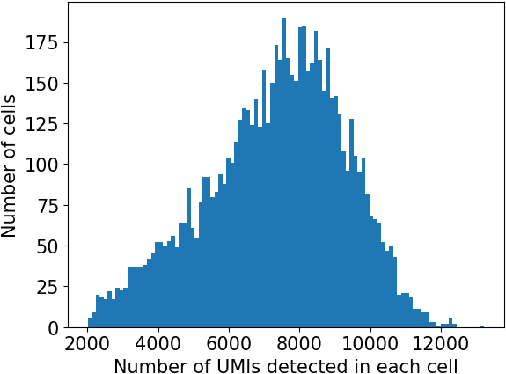
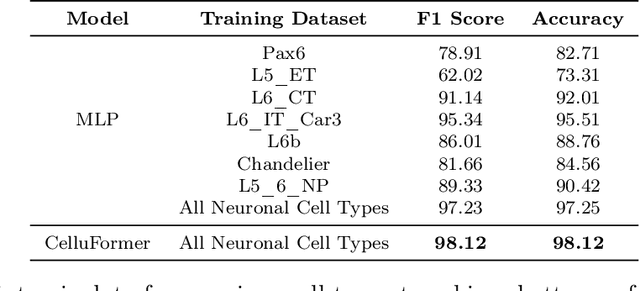


Abstract:Gene-gene interactions play a crucial role in the manifestation of complex human diseases. Uncovering significant gene-gene interactions is a challenging task. Here, we present an innovative approach utilizing data-driven computational tools, leveraging an advanced Transformer model, to unearth noteworthy gene-gene interactions. Despite the efficacy of Transformer models, their parameter intensity presents a bottleneck in data ingestion, hindering data efficiency. To mitigate this, we introduce a novel weighted diversified sampling algorithm. This algorithm computes the diversity score of each data sample in just two passes of the dataset, facilitating efficient subset generation for interaction discovery. Our extensive experimentation demonstrates that by sampling a mere 1\% of the single-cell dataset, we achieve performance comparable to that of utilizing the entire dataset.
GPTON: Generative Pre-trained Transformers enhanced with Ontology Narration for accurate annotation of biological data
Oct 12, 2024

Abstract:By leveraging GPT-4 for ontology narration, we developed GPTON to infuse structured knowledge into LLMs through verbalized ontology terms, achieving accurate text and ontology annotations for over 68% of gene sets in the top five predictions. Manual evaluations confirm GPTON's robustness, highlighting its potential to harness LLMs and structured knowledge to significantly advance biomedical research beyond gene set annotation.
AIPatient: Simulating Patients with EHRs and LLM Powered Agentic Workflow
Sep 27, 2024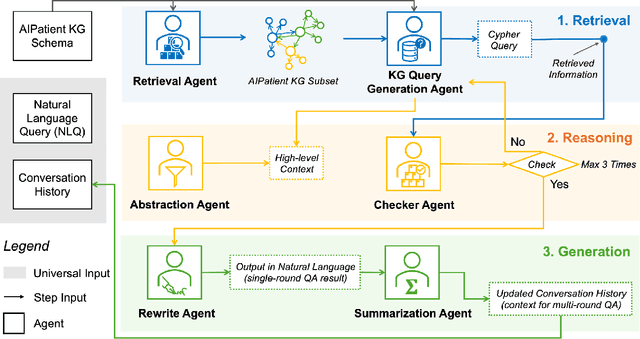
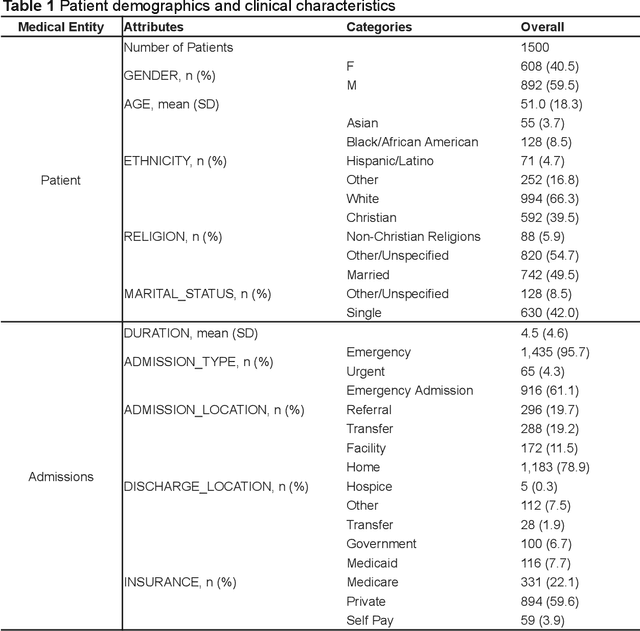
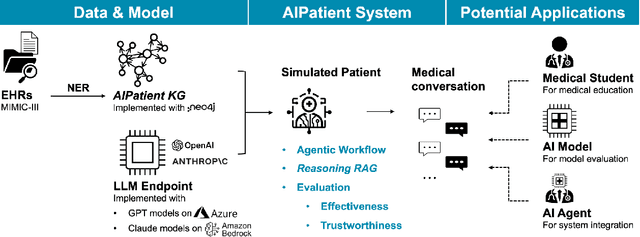

Abstract:Simulated patient systems play a crucial role in modern medical education and research, providing safe, integrative learning environments and enabling clinical decision-making simulations. Large Language Models (LLM) could advance simulated patient systems by replicating medical conditions and patient-doctor interactions with high fidelity and low cost. However, ensuring the effectiveness and trustworthiness of these systems remains a challenge, as they require a large, diverse, and precise patient knowledgebase, along with a robust and stable knowledge diffusion to users. Here, we developed AIPatient, an advanced simulated patient system with AIPatient Knowledge Graph (AIPatient KG) as the input and the Reasoning Retrieval-Augmented Generation (Reasoning RAG) agentic workflow as the generation backbone. AIPatient KG samples data from Electronic Health Records (EHRs) in the Medical Information Mart for Intensive Care (MIMIC)-III database, producing a clinically diverse and relevant cohort of 1,495 patients with high knowledgebase validity (F1 0.89). Reasoning RAG leverages six LLM powered agents spanning tasks including retrieval, KG query generation, abstraction, checker, rewrite, and summarization. This agentic framework reaches an overall accuracy of 94.15% in EHR-based medical Question Answering (QA), outperforming benchmarks that use either no agent or only partial agent integration. Our system also presents high readability (median Flesch Reading Ease 77.23; median Flesch Kincaid Grade 5.6), robustness (ANOVA F-value 0.6126, p<0.1), and stability (ANOVA F-value 0.782, p<0.1). The promising performance of the AIPatient system highlights its potential to support a wide range of applications, including medical education, model evaluation, and system integration.
CL4KGE: A Curriculum Learning Method for Knowledge Graph Embedding
Aug 27, 2024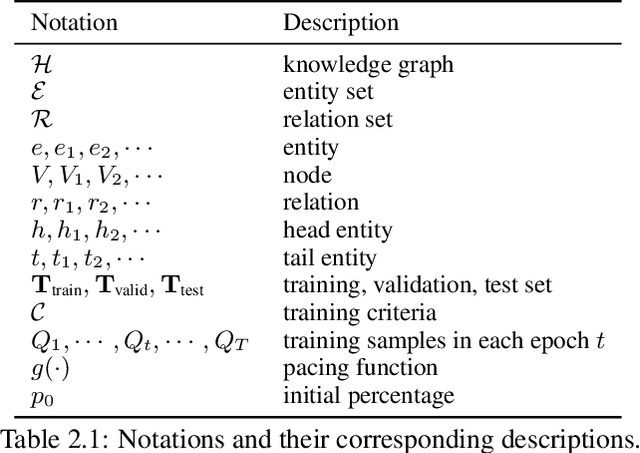
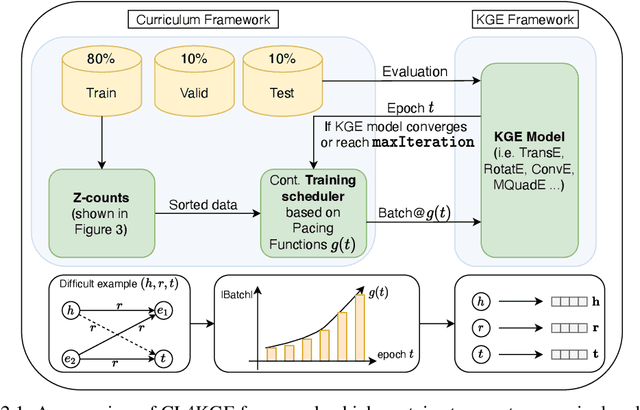
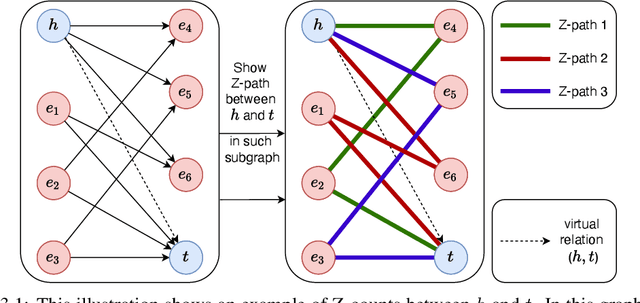

Abstract:Knowledge graph embedding (KGE) constitutes a foundational task, directed towards learning representations for entities and relations within knowledge graphs (KGs), with the objective of crafting representations comprehensive enough to approximate the logical and symbolic interconnections among entities. In this paper, we define a metric Z-counts to measure the difficulty of training each triple ($<$head entity, relation, tail entity$>$) in KGs with theoretical analysis. Based on this metric, we propose \textbf{CL4KGE}, an efficient \textbf{C}urriculum \textbf{L}earning based training strategy for \textbf{KGE}. This method includes a difficulty measurer and a training scheduler that aids in the training of KGE models. Our approach possesses the flexibility to act as a plugin within a wide range of KGE models, with the added advantage of adaptability to the majority of KGs in existence. The proposed method has been evaluated on popular KGE models, and the results demonstrate that it enhances the state-of-the-art methods. The use of Z-counts as a metric has enabled the identification of challenging triples in KGs, which helps in devising effective training strategies.
SAM2-PATH: A better segment anything model for semantic segmentation in digital pathology
Aug 07, 2024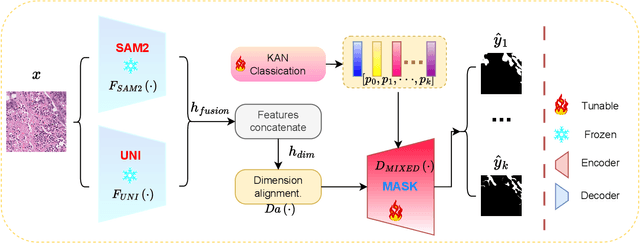
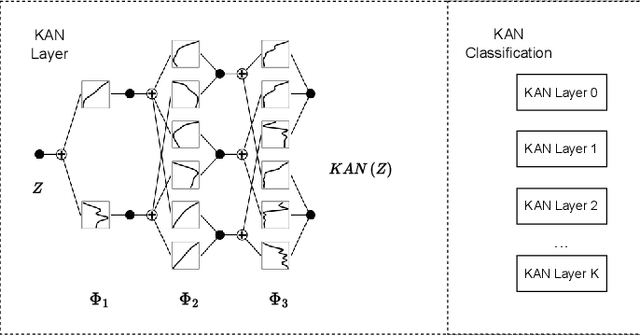
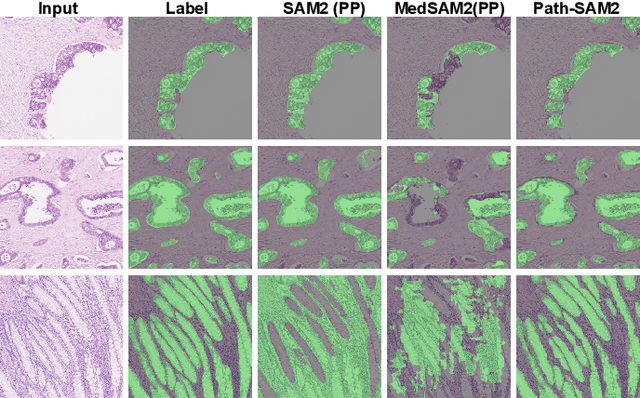
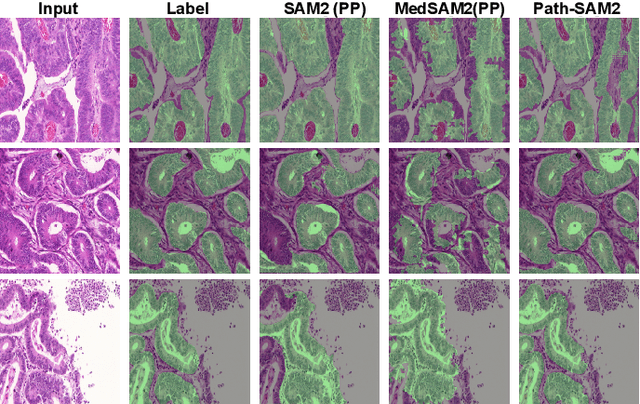
Abstract:The semantic segmentation task in pathology plays an indispensable role in assisting physicians in determining the condition of tissue lesions. Foundation models, such as the SAM (Segment Anything Model) and SAM2, exhibit exceptional performance in instance segmentation within everyday natural scenes. SAM-PATH has also achieved impressive results in semantic segmentation within the field of pathology. However, in computational pathology, the models mentioned above still have the following limitations. The pre-trained encoder models suffer from a scarcity of pathology image data; SAM and SAM2 are not suitable for semantic segmentation. In this paper, we have designed a trainable Kolmogorov-Arnold Networks(KAN) classification module within the SAM2 workflow, and we have introduced the largest pretrained vision encoder for histopathology (UNI) to date. Our proposed framework, SAM2-PATH, augments SAM2's capability to perform semantic segmentation in digital pathology autonomously, eliminating the need for human provided input prompts. The experimental results demonstrate that, after fine-tuning the KAN classification module and decoder, Our dataset has achieved competitive results on publicly available pathology data. The code has been open-sourced and can be found at the following address: https://github.com/simzhangbest/SAM2PATH.
Large Language Model Enhanced Knowledge Representation Learning: A Survey
Jul 01, 2024



Abstract:The integration of Large Language Models (LLMs) with Knowledge Representation Learning (KRL) signifies a pivotal advancement in the field of artificial intelligence, enhancing the ability to capture and utilize complex knowledge structures. This synergy leverages the advanced linguistic and contextual understanding capabilities of LLMs to improve the accuracy, adaptability, and efficacy of KRL, thereby expanding its applications and potential. Despite the increasing volume of research focused on embedding LLMs within the domain of knowledge representation, a thorough review that examines the fundamental components and processes of these enhanced models is conspicuously absent. Our survey addresses this by categorizing these models based on three distinct Transformer architectures, and by analyzing experimental data from various KRL downstream tasks to evaluate the strengths and weaknesses of each approach. Finally, we identify and explore potential future research directions in this emerging yet underexplored domain, proposing pathways for continued progress.
Combinatorial Optimization with Automated Graph Neural Networks
Jun 05, 2024



Abstract:In recent years, graph neural networks (GNNs) have become increasingly popular for solving NP-hard combinatorial optimization (CO) problems, such as maximum cut and maximum independent set. The core idea behind these methods is to represent a CO problem as a graph and then use GNNs to learn the node/graph embedding with combinatorial information. Although these methods have achieved promising results, given a specific CO problem, the design of GNN architectures still requires heavy manual work with domain knowledge. Existing automated GNNs are mostly focused on traditional graph learning problems, which is inapplicable to solving NP-hard CO problems. To this end, we present a new class of \textbf{AUTO}mated \textbf{G}NNs for solving \textbf{NP}-hard problems, namely \textbf{AutoGNP}. We represent CO problems by GNNs and focus on two specific problems, i.e., mixed integer linear programming and quadratic unconstrained binary optimization. The idea of AutoGNP is to use graph neural architecture search algorithms to automatically find the best GNNs for a given NP-hard combinatorial optimization problem. Compared with existing graph neural architecture search algorithms, AutoGNP utilizes two-hop operators in the architecture search space. Moreover, AutoGNP utilizes simulated annealing and a strict early stopping policy to avoid local optimal solutions. Empirical results on benchmark combinatorial problems demonstrate the superiority of our proposed model.
 Add to Chrome
Add to Chrome Add to Firefox
Add to Firefox Add to Edge
Add to Edge